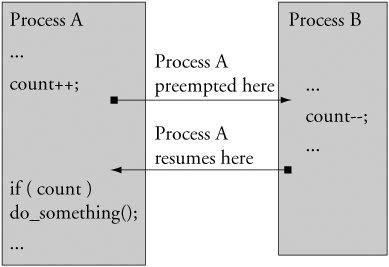
Comprehensive Real-World Guidance for Every Embedded Developer and Engineer
This book brings together indispensable knowledge for building efficient, high-value, Linux-based embedded products: information that has never been assembled in one place before. Drawing on years of experience as an embedded Linux consultant and field application engineer, Christopher Hallinan offers solutions for the specific technical issues you're most likely to face, demonstrates how to build an effective embedded Linux environment, and shows how to use it as productively as possible.
Hallinan begins by touring a typical Linux-based embedded system, introducing key concepts and components, and calling attention to differences between Linux and traditional embedded environments. Writing from the embedded developer's viewpoint, he thoroughly addresses issues ranging from kernel building and initialization to bootloaders, device drivers to file systems.
Hallinan thoroughly covers the increasingly popular BusyBox utilities; presents a step-by-step walkthrough of porting Linux to custom boards; and introduces real-time configuration via CONFIG_RT--one of today's most exciting developments in embedded Linux. You'll find especially detailed coverage of using development tools to analyze and debug embedded systems--including the art of kernel debugging.
• Compare leading embedded Linux processors
• Understand the details of the Linux kernel initialization process
• Learn about the special role of bootloaders in embedded Linux systems, with specific emphasis on U-Boot
• Use embedded Linux file systems, including JFFS2--with detailed guidelines for building Flash-resident file system images
• Understand the Memory Technology Devices subsystem for flash (and other) memory devices
• Master gdb, KGDB, and hardware JTAG debugging
• Learn many tips and techniques for debugging within the Linux kernel
• Maximize your productivity in cross-development environments
• Prepare your entire development environment, including TFTP, DHCP, and NFS target servers
• Configure, build, and initialize BusyBox to support your unique requirements
17.2.1. Impediments to Preemption
17.2.1. Impediments to Preemption
The challenge in making the kernel fully preemptable is to identify all the places in the kernel that must be protected from preemption. These are the critical sections within the kernel where preemption cannot be allowed to occur. For example, assume that Process A in Figure 17-2 is executing in the kernel performing a file system operation. At some point, the code might need to write to an in-kernel data structure representing a file on the file system. To protect that data structure from corruption, the process must lock out all other processes from accessing the shared data structure. Listing 17-1 illustrates this concept using C syntax.
Listing 17-1. Locking Critical Sections
...
preempt_disable();
...
/* Critical section */
update_shared_data();
...
preempt_enable();
...
If we did not protect shared data in this fashion, the process updating the shared data structure could be preempted in the middle of the update. If another process attempted to update the same shared data, corruption of the data would be virtually certain. The classic example is when two processes are operating directly on common variables and making decisions on their values. Figure 17-3 illustrates such a case.
Figure 17-3. Shared data concurrency error
In Figure 17-3, Process A is interrupted after updating the shared data but before it makes a decision based on it. By design, Process A cannot detect that it has been preempted. Process B changes the value of the shared data before Process A gets to run again. As you can see, Process A will be making a decision based on a value determined by Process B. If this is not the behavior you seek, you must disable preemption in Process A around the shared datain this case, the operation and decision on the variable count.





